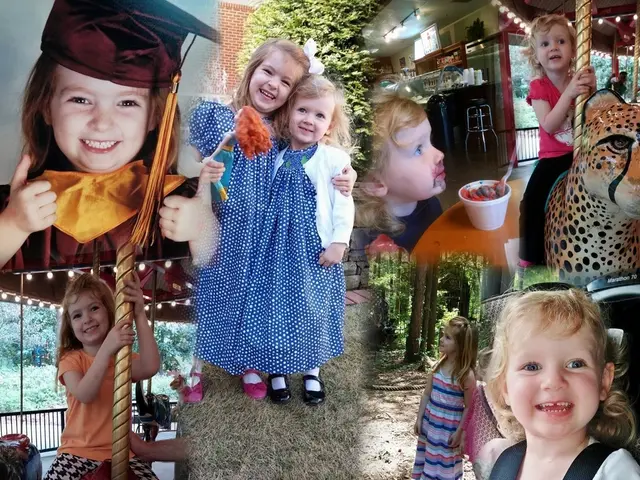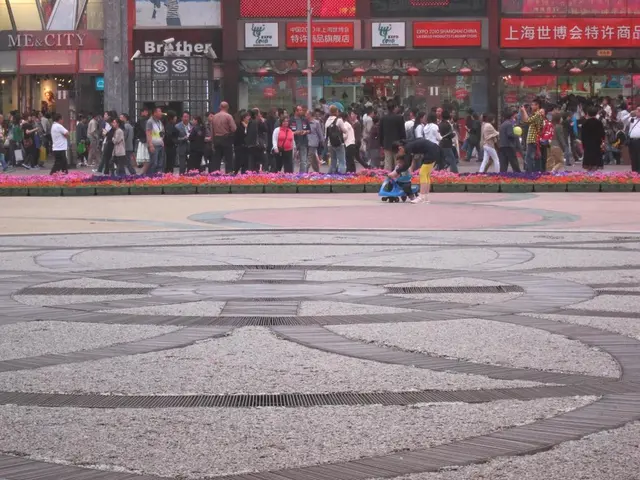Exploration of Patination Artistry: Dedication to Unique Artisanal Perfection by Berluti
Renowned luxury shoe brand Berluti preserves its artisanal heritage in a refined workshop nestled in the Italian countryside. This labor of love celebrates luxury through the skilled application of patina, a unique craftsmanship technique that bestows an aged, textured quality on their shoes.
Located over 8,000 square meters in the Emilia-Romagna region, fifteen minutes from Ferrara, the workshop was inaugurated in 2015. The spacious, rectangular structure, reminiscent of a shoe box, houses a spacious atrium with a wooden vaulted ceiling mimicking the lacing of the shoes made on-site. While made-to-order men's shoes are produced in Paris on rue Marbeuf, the ready-to-wear models for this global brand, which expanded into accessories and ready-to-wear in 2011, are developed and produced by over 300 employees in this Italian haven.
The allure of a pair priced at an average of €2,000 lies in the quality of materials, the skillful hands that mold them, and the signature craftsmanship of each house. Berluti's trademark is the art of patina, a technique applied by hand that imparts a smoky aspect to each shoe. Upon entering, the patinated walls, covered in Venezia leather, are evidence of this meticulous process.
The brand, acquired by LVMH in 1993, boasts a rich heritage, dating back to the birth of the iconic "Alessandro" model in 1895. Developed by the shoemaker Alessandro Berluti, it was the first shoe to be made in a single piece of leather. This original design is now reworked as the "Mont-Thabor" model, with a slightly wider square toe. Known for catering to prestigious clients throughout history, Berluti's creativity has always been fueled by their customers' expectations, crafting designs in the footsteps of cultured admirers such as Marcel Proust, the Duke of Windsor, Jean Cocteau, and Andy Warhol, who lent his name to a 1962 model.
In the 1980s, Olga Berluti, a member of the family, recognized the power of customization to elevate excellence. She saw shoes as having a soul, and patina as a supplement that brought a unique singularity to each pair. Olga developed and refined this coloring technique, sourcing the perfect leather in Italy, the ideal blends, and the precise gestures. Today, the patina technique extends to leather goods and ready-to-wear pieces, embodying one of Berluti's defining symbols.
To appreciate the art of patina, one must trace its origin to the shoe's construction. According to Berluti, the workshop is segmented into two departments: development, where prototypes are made, and production. Each stage requires manual intervention, with machines supporting the craftsmen's expertise. Patterns, lastings, and cutting are computer-generated, requiring various techniques to match materials and precision requirements. In the interest of circularity, scraps are reused for prototypes and small accessories, while shavings are recycled into fertilizer.
Comfort is integral to aesthetic demands at Berluti, and it begins before even addressing the shoe's exterior. Leather pieces undergo pressing to achieve the desired thickness, with precision vital for a natural, living material like leather. The versatility of the posts enables skill shares, with seamstresses able to work on an Andy model or a sneaker with equal dexterity.
Once assembled and the upper applied, the model takes shape. At all stages, the craftsman ensures precision, with the machine only supporting to stretch the leather or finish the sole. The crucial role of the human touch is emphasized, as it is the sole guarantee of precision with a natural material such as leather.
The patina is applied with a cloth using light rubs, requiring a precise, attentive touch, especially on the edges of the smoky part. The patina workshop, bathed in a scholarly atmosphere reminiscent of chemistry laboratories, stores a myriad of potions in large bottles, hinting at the countless color shades at the artisans' disposal. An internal school allows trainees to learn the art of patina for free, with tuition lasting three months and culminating in a diploma validated by the region.
Not all shoes are patinated; only leather pieces receive this treatment. The by-product of this process is a deeply personal piece, as each client's wear adds to the shoe's character over time. To preserve this history, clients are invited to return to the store for a color touch-up after fifteen days of wear, an occasion that forges a bond between the customer and the Berluti family.
- Berluti, renowned for its rich heritage and skillful craftsmanship, offers a variety of products beyond luxury shoes, extending into fashion-and-beauty accessories and home-and-garden items.
- In the heart of the Emilia-Romagna region, Berluti's spacious workshop houses a sanctuary of technology, where computers generate patterns, lastings, and cutting for the shoes, enhancing the precision and versatility of each creation.
- The general news frequently features stories about Berluti's innovative approach to the patina technique, which has transitioned from leather shoes to home-and-garden merchandise, infusing a unique character and personalized lifestyle into each product.








